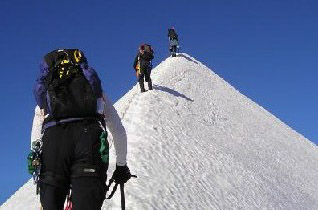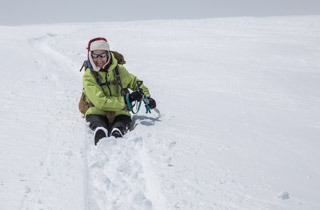Dirt Digger Core Exercise
Dirt Digger Core Exercise
Functional Core Exercise: Dirt Digger
If abdominal crunches are not giving you the results you want, try a functional core strengthening exercise that works your obliques, thighs, lower back, glutes, and shoulders. It resembles digging dirt or shoveling snow, and with little or no weight, it can also be included in a dynamic warm-up before you begin your sport or activity. As always, make sure you have warmed up and stretched for 5-10 minutes before trying any new strength training exercises.
What You Need
You will need a fairly heavy dumbbell, but you can also use a full one-gallon jug (7 pounds), suitcase, backpack, or another weighted object.

Performance of the Dirt Digger exercise


Performance
Stand with feet a little wider than shoulder-width apart. Keep your knees tracking directly over your toes. The wider your stance, the farther you will need to turn out your toes to maintain proper alignment for your knees. Hold a single dumbbell in both hands. Squat down to the ground, keeping your back straight and dumbbell directly below your chin, and as you lift back up to a standing position, rotate to one side while keeping your feet flat on the floor. Imagine throwing dirt behind you. Repeat to the other side, alternating back and forth for the desired number of repetitions. Be sure to keep your abs tight to prevent hyperextending your back.
How to Include It
Perform 2-3 sets of 8-10 repetitions to each side (16-20 total repetitions) with about a minute of rest between sets. Since this works large muscles and requires more stabilization from the core than machine exercises, perform this exercise before doing any machine work. Alternatively, you may choose to do core work for the lower back, obliques, and abdominals on a separate day from any other strength training.
How to Increase Intensity
Once you get comfortable with this exercise, try 1) adding resistance by using a heavier weight; 2) performing it standing on one leg at a time (with a greatly reduced weight) taking the dumbbell outside of the standing leg and lifting to the opposing shoulder (but keep your foot near the floor until you improve your balance); 3) try standing in front of a cable weight stack with a rope attachment–the oblique pull will challenge your core from a different direction.
Before beginning a new conditioning program, consult your physician. Remember to perform strength training moves for the whole body at least twice a week, allowing 48 hours of recovery time between sessions. If you currently suffer from any chronic lower back soreness or another sport-related injury, consult your doctor, physical therapist, or strength and conditioning coach.






